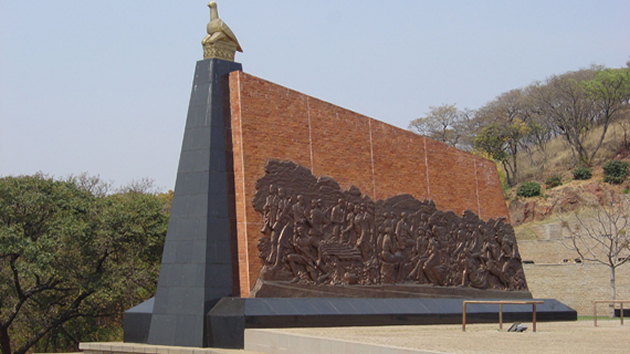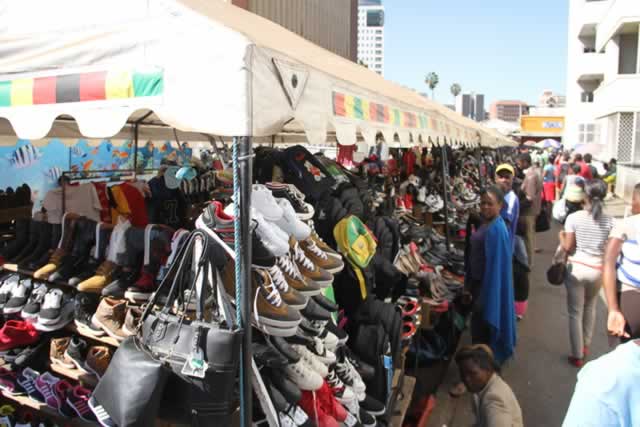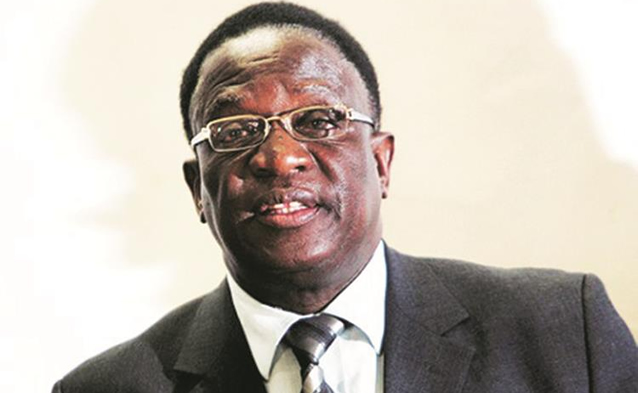Heroes Acre: bastion of patriotism, tourist attraction

 Christopher Farai Charamba Features writer
Christopher Farai Charamba Features writer
The National Heroes Acre carries the richness of a people struggle against the brutal oppressive regime. There lies the leadership of a people’s revolution, those who sacrificed their life to bring change in Zimbabwe politics thereby shaping not only the country’s developmental pattern but also the region.
The 57-acre (230,000 m2) shrine is situated seven kilometres west of the city centre, holds a central place in the making of Zimbabwe.
Constructed by North Korean architects, the National Heroes Acre’s is shaped like two AK 47 assault rifles lying with their backs to each other with the graves symbolizing the magazine.
The main attractions are the statue and tomb of the Unknown Soldier, the Eternal Flame, the murals depicting stages of the liberation struggle, as well as the museum which holds various exhibitions.
The shrine has become a must visit for all serious tourists seeking to understand the tradition and making of Zimbabwe. Daily foreign nationals, local school children and college students throng the shrine to share and learn about the acre where some of Zimbabwe’s finest political and developmental minds are buried.
As resident curator of the National Heroes Acre Museum Rumbidzai Bvira explains, the monument is claiming its share of visitors to the city who want to know of the making of the shrine.
The National Heroes acre was initiated in 1980 as an initiative to honour those who fought and brought independence to Zimbabwe.
“Aside from the main attraction of the graves there is also the Heroes Gallery where we hold various exhibitions which focus on the Zimbabwe liberation struggle.
“The current exhibition which is yet to officially open is on the Chibondo mass graves which we hope to launch before the August Heroes Day celebration and run for about two years.
“These exhibitions are important because it is an opportunity to learn more about the history of Zimbabwe in conjunction and in context with the people lying at the national shrine. One has the opportunity to learn what the sacrifice the heroes made was for and appreciate it,” Ms Bvira said.
Open daily between the hours of 8:00 and 16:30 including weekends and public holidays, the National Heroes Acre is a perfect place for one to familiarise themselves with a critical part of Zimbabwe’s history.
“It is important that we cherish our history as learning from it can help foster national unity which is one of the aims of the National Heroes Acre. This monument serves as an education centre for students, ordinary Zimbabweans and tourists from abroad about a major part of this nation’s history.
“Entry into the monument is $1 per student for school groups, $2 per student for university groups and $4 for the general public. We encourage all Zimbabweans to feel free to come and visit the National Heroes Acre to learn about some of the people we owe our independence and freedom to,” Ms Bvira said.
Currently 110 national heroes and heroines are interred at the National Heroes Acre and not only to gave birth to Zimbabwe through the liberation struggle but were instrumental in shaping post independent era. Among those who rest at the centre is the late Father Zimbabwe Vice President Dr Joshua Nkomo.
Ideally the Heroes Acre pays due homage to these individuals who are no longer with us, but need to be remembered and honoured not only because of their great works but so that Zimbabweans of generations to come can know of their sacrifices and that their legacies never fade.
Ms Bvira explains the primary objective was creating a resting place for extraordinary Zimbabweans who helped the country attain independence but has been extended to other Zimbabweans who have served their country in an exemplary manner.
“It is therefore a monument for past, present and future generations of Zimbabweans who will continue to inspire and be inspired by the individuals resting on this prestigious site,” she said.
The bronze statue of the Unknown Soldier is one of the most important items on the site consisting of three individuals, two men and one woman who represent the unknown men and women who lost their lives in the struggle for independence.
“One of the men is holding a rocket launcher while the woman is holding a gun and the other man a flag. The statue has basically become the official symbol of the liberation struggle heritage,” Ms Bvira said.
Some of the walls of the monument were constructed to resemble Great Zimbabwe while the graves were built a similar style to the Khami National Monument.
“The entire Heroes Acre site is shaped in the form of an AK-47 on of the more prominent and important weapons that was used during the struggle for independence.
“Behind the statue and tomb of the Unknown Soldier is the Freedom Tower which atop it burns the Eternal Flame. This flame stands for the aspirations of Zimbabweans to be a free and independent nation and is symbolic of the flame that was lit at independence in April 1980.
The flame also stands for the spirit of all the people who died during the struggle and is at the top of the 40 metre tower because it should be a beacon visible and recognisable from a distance and to all Zimbabweans.”
Flanking the statue and tomb of the Unknown Soldier are murals that depict various stages of the liberation struggle during the 1960s and 1970s culminating the in the attainment of independence in 1980.
Of the 110 national heroes and heroines buried at the National Heroes Acre only six are women. There are also 12 people who have been awarded hero status but have been buried elsewhere bringing the total number of national heroes and heroines to 122.
According to the National Heroes Act Chapter 10:16, designation of hero status is done by the President “where the President considers that any deceased person who was a citizen of Zimbabwe has deserved well of his country on account of his outstanding, distinctive and distinguished service to Zimbabwe, he may, by notice in Gazette, designate such a person a national, provincial or district hero of Zimbabwe.’
National hero status is the highest honour that can be conferred on any individual and this grants the recipient the privilege to be buried at the National Heroes Acre.
“The first hero to be buried on site was Cde Tarcissius Malan George Silundika in April 1981 and then in August 1981 there were reburials of some of the comrades who had lost their lives outside of the country during the struggle such as Cde Herbert Chitepo, Josiah Magama Tongogara and Jason Ziyaphapha Moyo,” explained the curator Ms Bvira.
The National Heroes Acre accommodates 5000 people seated in the public seated space and each year meets this capacity during the Heroes Day celebrations as well as during more sombre moments when Zimbabweans come to pay their respects at funerals of fallen comrades.
Every year in August, Zimbabwe celebrates National Heroes Day recognising and honouring the lives of those buried at the National Heroes Acre as well as those who lost their lives abroad and buried at sites such as Chimoio and Nyadzonya in Mozambique and Freedom Camp in Zambia.
Feedback: [email protected] <mailto:[email protected]>









Comments